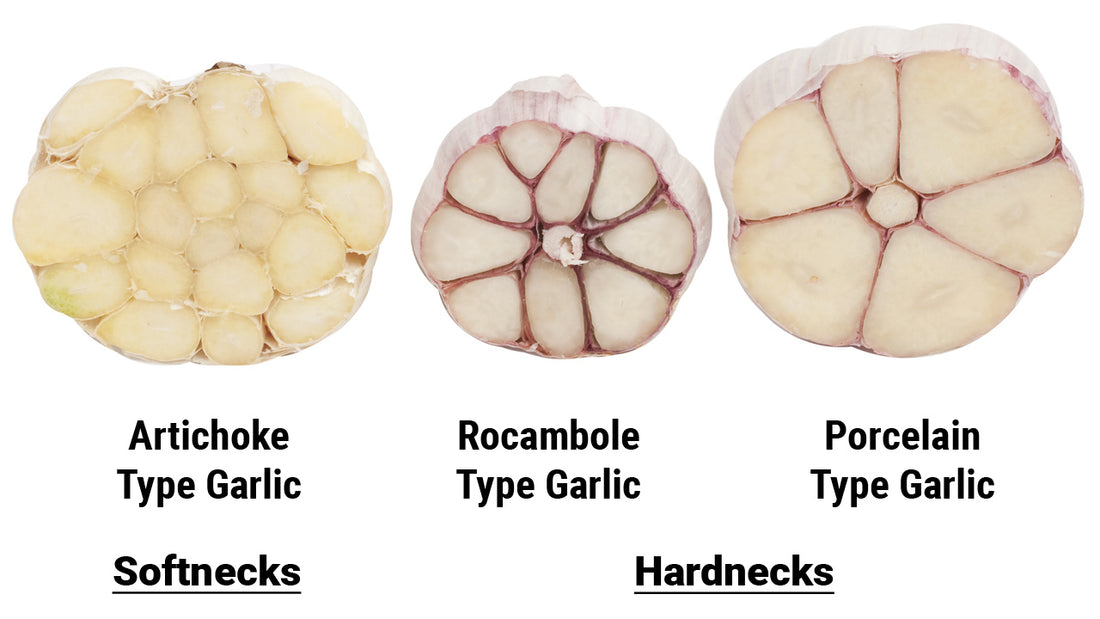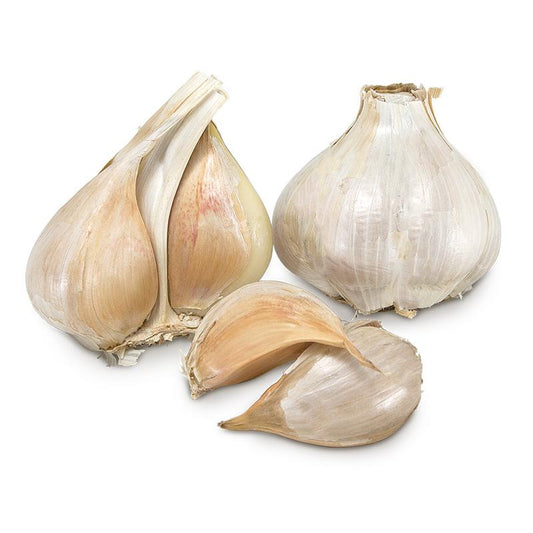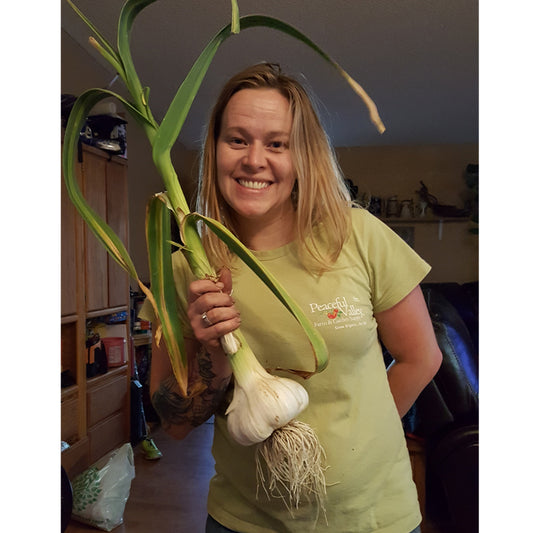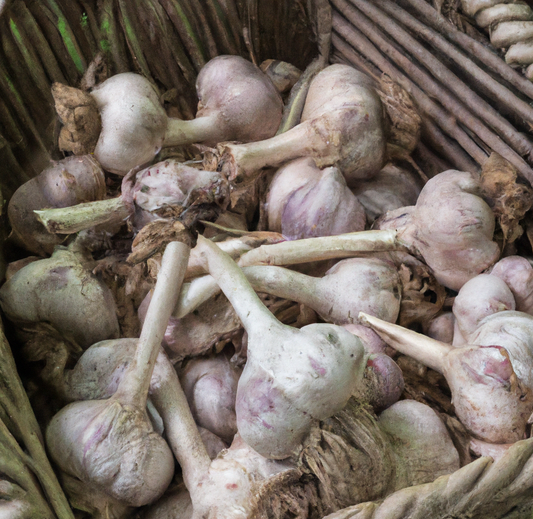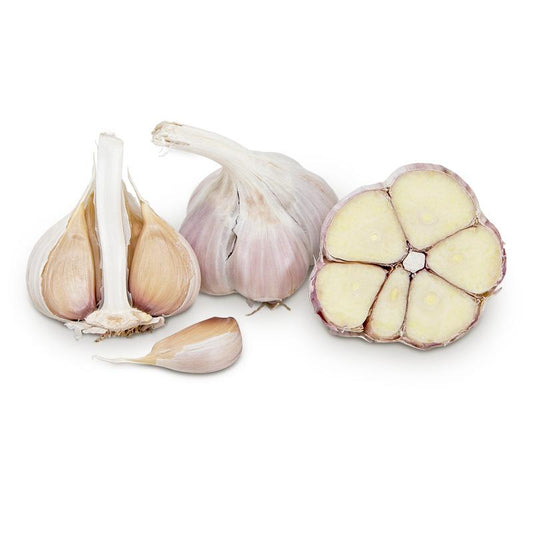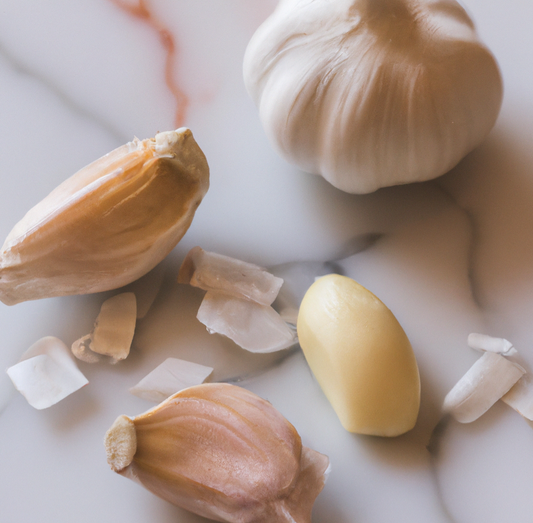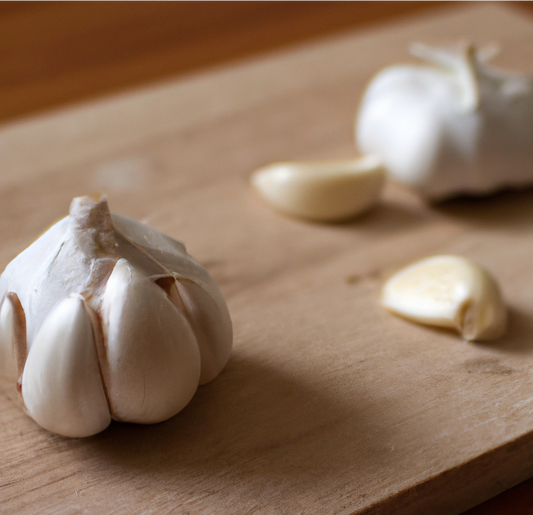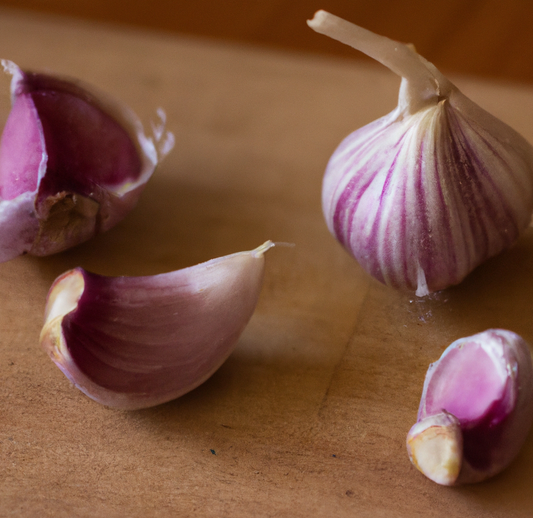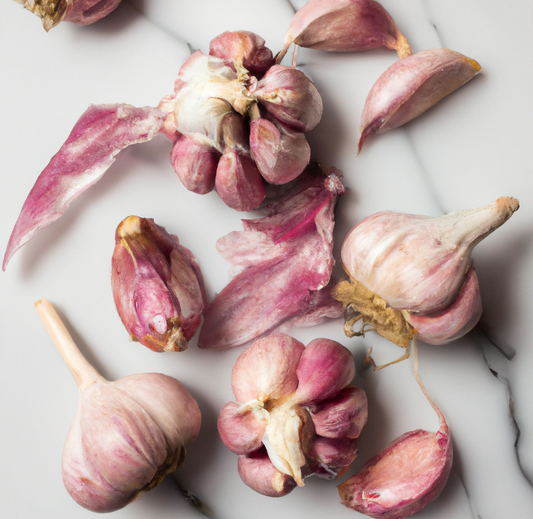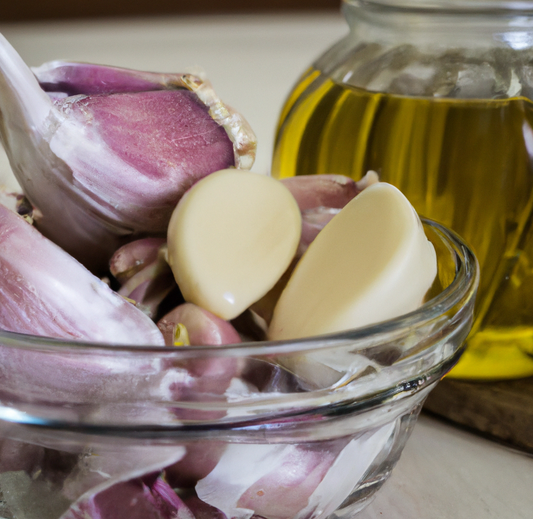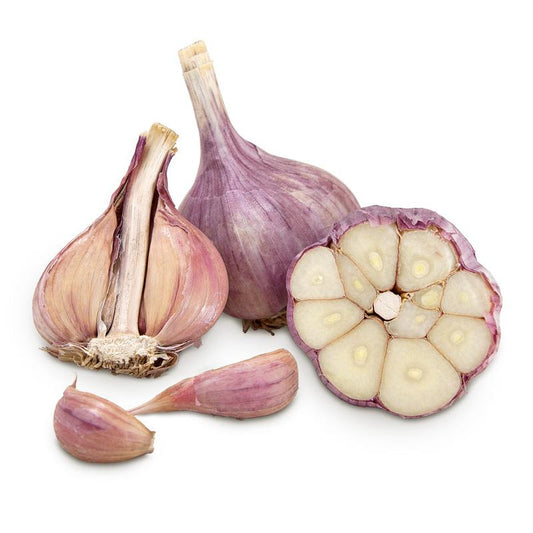Creamy aioli, hearty spaghetti aglio e olio, spicy chimichurri ... all around the world garlic is a key ingredient to a delicious meal.
In all corners of the globe, too, garlic farmers have developed their own varieties with unique flavors and colors. Why not grow your own Spanish Roja garlic (perfect for Sopa de Ajo (Spanish Garlic Soup side by side with Siberian garlic and make authentic Russian Piroshki with Vmochanka)? There are two main types of seed garlic to choose from: hardneck and softneck. Elephant garlic, which is actually a member of the leek family, is a separate type.
Softneck Garlic
-
Softneck seed garlic, also called artichoke garlic due to their numerous cloves that give them an appearance similar to the “petals” of an artichoke head, is the most common garlic due to its excellent storage characteristics. This is the kind you will find in grocery stores.
-
Softnecks are the most heat tolerant of garlic, and have a sweeter, milder flavor than hardnecks. If you’re looking to make garlic braids, this is the type to grow.
-
They come in both white and red varieties.
-
Varieties include California Late White, California Early White, Inchelium Red, Early Purple Italian, Sonoran and Sicilian.
Hardneck Garlic
Hardneck seed garlic grows with a hard center stalk around which the cloves grow. This type of seed garlic is more assertively flavored, easier to peel, and has bigger (though fewer) cloves than softneck. They grow best in areas with freezing winter temperatures. Their vibrant colors and superb flavor make these gourmet garlics an excellent choice for the garden, especially as their short storage time means that you are unlikely to find them from your local grocer.

Hardnecks are classified in three categories: rocambole, porcelain, and purple stripe. These categories have been refined based on recent garlic DNA testing, which also showed that originally all garlic came from the Caucasus Mountains before selective breeding created new regional varieties. These categories also provide easy guidelines for selecting the best hardneck seed garlic for your gardening and culinary needs.
Rocambole
Rocambole seed garlic has wrappers that are typically reddish in color, such as Georgian Red, Russian Red, or Spanish Roja. However, color is not the only requirement for this category, as some varieties may be white or purple colored.
Rocambole scapes are more tightly curled than other varieties. Most rocambole varieties produce 8 to 10 cloves per head.
Purple Stripe
Purple stripe seed garlic has wrappers that are typically purple, although some varieties can have white or red coloration. These include Bogatyr, Metechi, Purple Glazer, and Siberian. Purple stripe seed garlic typically produces 5 to 10 cloves per head, depending on variety.
Purple stripes can be further divided into “standard purple stripe” which have vibrant purple striping on their wrappers, “glazed purple stripe” which have a deep purple wrapper tingled with gold or silver hues, and “marbled purple stripe” which are more likely to be mottled than striped and may resemble rocambole.
Porcelain
Porcelain seed garlic has wrappers that are predominately white, sometimes with a blush of red or purple, and include Georgian Fire, Music, German, Norquay, and German Xtra Hardy. Porcelain’s lovely color and excellent flavor makes these among the more popular varieties of hardneck seed garlic.
Porcelains tend to have less cloves per head, at 4 to 9 depending on the variety; however the cloves can grow to be quite large compared to other seed garlic varieties.
Select several varieties of seed garlic to grow in your garden and enjoy a world of garlic flavors!

